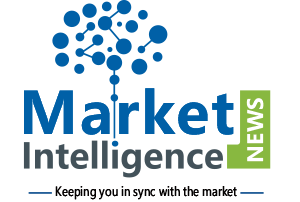Global coding and marking systems market is estimated to attain a size of $3,358.0 million in 2017 and is projected to witness a CAGR of 6.9% during 2018-2023. In terms of technology, the coding and marking systems market is segmented into continuous inkjet, laser coding and marking, thermal ink jet, drop on demand, print & apply labelers, thermal transfer overprinting, and others. Others include valve jet, and hot-melt ink jet technologies. Laser coding and marking technology has been further bifurcated into direct part marking (DPM) and laser coding. Continuous inkjet, thermal transfer overprinting, and laser coding and marking are the three common types of technologies used in coding and marking systems market. Among these three technologies, thermal transfer overprinting is expected to register the fastest growth in the coding and marking systems market during the forecast period.
In today’s world, the manufacturing of vehicles requires thousands of individual components and for eradicating flaws in the manufacturing process, many of these components need to carry a specific part number. In order to code part numbers or counterfeit labels on automobile components, manufacturers need to take the help of coding and marking systems. According to Autocar (a British automobile magazine), 1.5 million cars and 2.4 million car engines were produced in the U.K. between January 2016 to November 2016. The production output for both cars and engines in the U.K. in 2016 was 7.0% more than the production output recorded in 2015. Such a growth in the production output of cars and engines has increased the demand for coding and marking systems in the automotive industry, in most of the countries of Asia-Pacific, North America, and Europe. Coding is also used by automotive manufacturers to create protection against counterfeit parts. According to Automotive Aftermarket Suppliers Association (AASA), the global automotive industry loses around $12.0 billion every year due to counterfeit products. Some of the examples of counterfeit automotive components include fake brake pads, compression systems, suspension components, batteries, steering linkages, and others. In order to prevent the threat of counterfeits, automotive manufacturers have started using scannable invisible anti-counterfeiting printing inks and bar-codes. As a result, the demand for advanced coding and marking systems has also increased among these manufacturers. Considering the impact of the aforementioned factors, it has been found that the automotive industry will remain a major growth vertical for coding and marking systems market during the forecast period.
Taking into an account of geographical landscape, Asia-Pacific held the largest share of the global coding and marking systems market in 2017. The application of coding and marking systems is gaining momentum in the food and beverage industry owing to stringent government regulations, increase in food and beverage, and increase in export of packaged food items. This in turn is driving the growth of the market in the region. Followed by Asia-Pacific, Europe was the second largest region with an estimated contribution of more than 23.0% in the global coding and marking systems market in 2017. From the supply side, the growth of the European market is driven by factors such as increase in access to low cost coding and marking technology, due to growth in the manufacturing sector of Germany.




